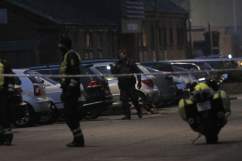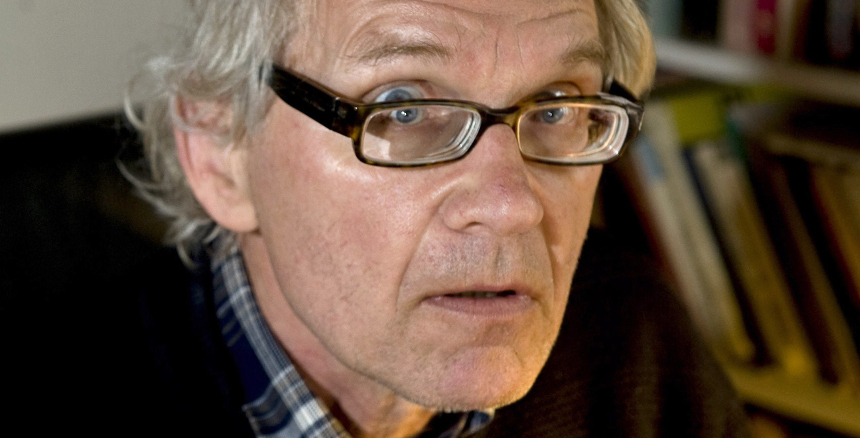
Swedish cartoonist Lars Vilks poses in his home outside Hoganas on May 16, 2010. (Getty)
Swedish artist Lars Vilks was the apparent target of a Saturday shooting at a Danish cafe, though it’s not the first attempt on the artist’s life. Here’s what you need to know about Lars Vilks:
1. Vilks Drew Pictures of Mohammad Dressed as a Dog
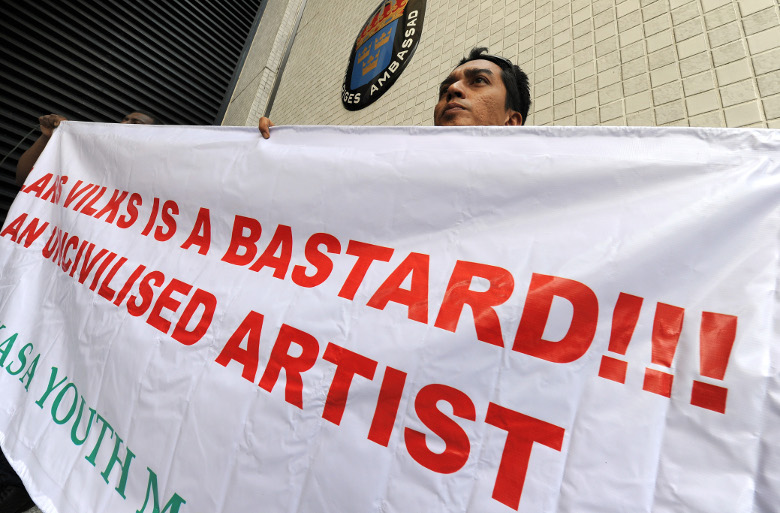
Malaysian activists hold up a banner against Swedish artist Lars Vilks during a protest in front of Sweden’s embassy in Kuala Lumpur on March 25, 2010. (Getty)
In anticipation of a 2007 art show in Sweden, Vilks drew line drawings of the prophet Mohammad with the body of a so-called roundabout dog, a common Swedish art installation located at traffic circles.
Tällerud, the gallery that had planned to show the artwork, decided against the installation after an international controversy over the drawings began to brew. The Gerlesborg School of Fine Art also refused to display the images, though one was ultimately published by newspaper Nerikes Allehanda
Several foreign governments requested that Sweden officially condemn Vilks’ work, including Iran, Pakistan, Afghanistan, Egypt and Jordan.
Then president of Iran Mahmoud Ahmadinejad told the Islamic Republic News Agency said the cartoons were part of a Zionist plot:
“Religions call for friendship, equality, justice, peace and respect for divine prophets. The Zionists only pretend to believe in religion. They are telling lies. They are perpetrating oppression against the Europeans and putting at risk the prestige of Europe.”
2. Vilks Was the Focus of a Failed Assassination Plot
Colleen LaRose, known as “Jihad Jane,” and two other United States citizens — Mohammad Hassas Khalid and Jamie Paulin Ramirez — hatched a plot to kill Vilks in 2009. When LaRose’s indictment was unsealed a year later it was revealed that she had been charged with attempting to recruit Muslims with the intention of killing Vilks.
Seven people were also arrested in Ireland on similar charges. Police identified the individuals as foreign-born residents of Ireland, mostly from Yemen and Morocco.
3. He’s One of al-Qaeda’s Most Wanted
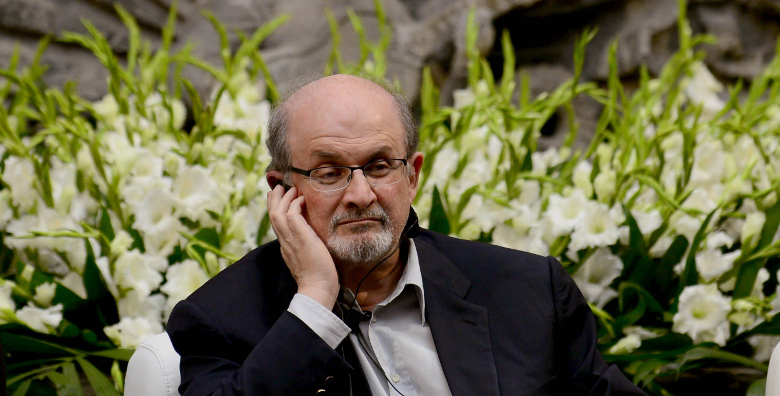
Indian born British writer Salman Rushdie. (Getty)
It was revealed in 2013 that Vilks is on a short-list of artists and writers terrorist group al-Qaeda most wants dead, according to a jihadist recruitment magazine.
The list includes Stéphane “Charb” Charbonnier, who was killed in the January shootings at Charlie Hebdo headquarters, Salman Rushdie,three employees of Danish newspaper Jyllands-Posten, Kurt Westergaard, Carsten Juste, and Flemming Rose.
The bounty on Vilks’ head was reportedly $100,000 in 2007.
A 2010 audio file sent to TT, a Swedish news organization, said support for Vilks was a determining factor in continued attacks:
“Our acts will speak for themselves as long as you do not end your war against Islam and humiliation of the Prophet and your stupid support for the pig Vilks.”
4. He’s Also a Sculptor

Nimis, as seen from Ladonia bay. (Wikimedia Commons)
Vilks is a self-taught artist, first obtaining international credibility for his driftwood sculptures Nimis and Arx. In 1996, the small beach-side area where the two sculptures are located became officially recognized as a “micro-nation” called “Ladonia” after a lengthy court battle.
As of 2011, there were 15,567 Ladonian citizens from around the world, none of whom reside within the borders of the “nation.”
Speaking to CNN, Vilks described himself as an “equal-opportunity offender.”
5. He Refused to Hide
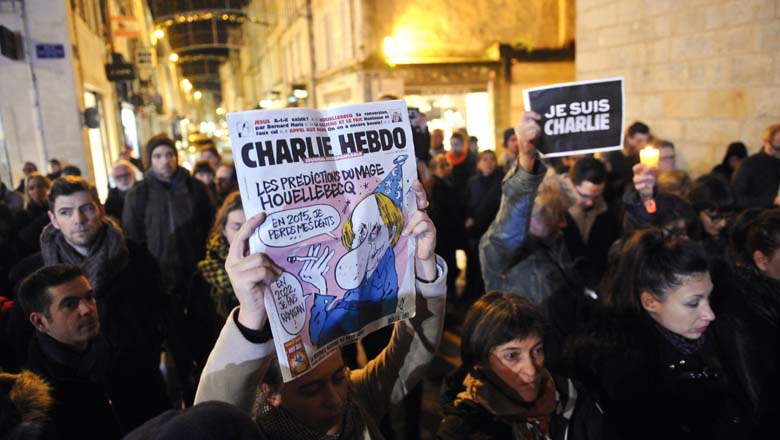
People hold a copy of a Charlie Hebdo newspaper and a sign reading ‘I am Charlie’ as they gather on January 7, 2015. (Getty)
Speaking to the Wall Street Journal after the January attacks on Charlie Hebdo, Vilks said police protection helps, but it doesn’t solve everything:
“Police protection doesn’t offer a 100 per cent guarantee as we saw with Charlie Hebdo but it goes pretty far.”
But Vilks remained defiant, telling the Wall Street Journal after Charlie Hebdo that issues needed to be brought out in the open:
“Almost the entire Muslim world is subject to a theological rule that has a strange outcome when it comes to human rights. You can’t ignore that. Then you’re talking tactics, how should one go about to change that. Some say, you should be very careful, but that’s just postponing the problem. Sooner or later you have to explain what you’re criticizing.”
